Introduction

Introduction:
Microchipping your dog is an essential step in ensuring their safety and providing you with peace of mind. This ultimate guide will provide you with all the information you need to understand the power of microchipping and why it is important for your furry friend.
Microchipping is a simple procedure that involves implementing a tiny electronic chip beneath your dog's skin, containing vital identification details. In the unfortunate event that your dog goes missing, this microchip can greatly increase the chances of being reunited with them.
This guide will walk you through the process of microchipping, including the different types of microchips available and how to register and update the information associated with the chip. Additionally, we will address common myths and misconceptions surrounding microchipping and provide accurate information on its benefits and importance. By taking proactive steps to ensure your dog's safety, you can enjoy peace of mind knowing that they are protected.
Why microchipping is important for your dog

Microchipping is crucial for your dog's safety and well-being. When a dog goes missing, having a microchip increases the chances of them being reunited with their owner. Unlike collars and ID tags, microchips cannot be easily removed or lost. They provide a permanent form of identification that can be scanned by animal shelters, veterinary clinics, and animal control agencies.
Moreover, microchipping is a legal requirement in many regions. Failing to comply with these regulations can result in penalties and fines. Additionally, microchipping your dog shows responsible pet ownership and demonstrates that you prioritize their safety.
Overall, microchipping your dog is a simple and effective way to ensure their identification and increase the likelihood of a safe return if they ever become lost or stolen.
How microchipping works and its benefits

Microchipping works by implanting a small device, about the size of a grain of rice, under the skin of your dog. This device contains a unique identification number that can be scanned using a microchip reader. When a lost or stray dog is found, animal shelters and veterinary clinics can scan for this microchip to retrieve the contact information of the owner.
The benefits of microchipping your dog are immense. Firstly, it greatly increases the chances of being reunited with your beloved pet in case they ever wander off or get lost. Unlike traditional ID tags, microchips cannot be easily lost or removed. Additionally, microchipping provides clear proof of ownership if any disputes arise. Moreover, many countries and regions now have laws requiring dogs to be microchipped as part of responsible pet ownership. Overall, microchipping is a simple and effective way to ensure the safety and well-being of your furry friend.
Understanding the Microchip
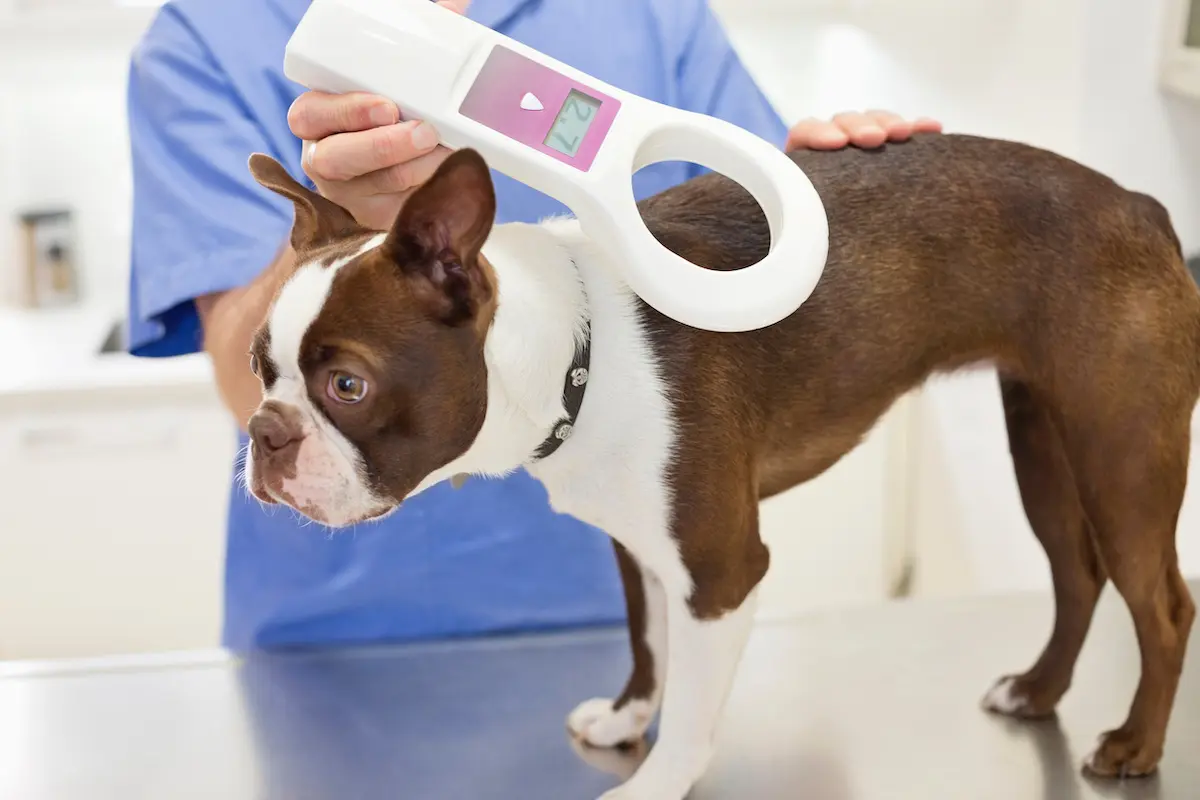
A microchip is a small, electronic device that is implanted under the skin of a dog. It is about the size of a grain of rice and contains a unique identification number. The microchip uses radio frequency identification (RFID) technology to store this information.
The process of implanting a microchip in dogs is quick and relatively painless. A veterinarian will use a needle to insert the microchip under the skin, usually between the shoulder blades. Once implanted, the microchip remains in place for the rest of the dog's life.
Different types of microchips are available, but they all serve the same purpose – providing a permanent form of identification for your dog. These microchips can be scanned by shelters, veterinarians, and animal control agencies to retrieve your contact information, increasing the chances of reuniting you with your lost or stolen pet.
What is a microchip and how it is implanted in dogs
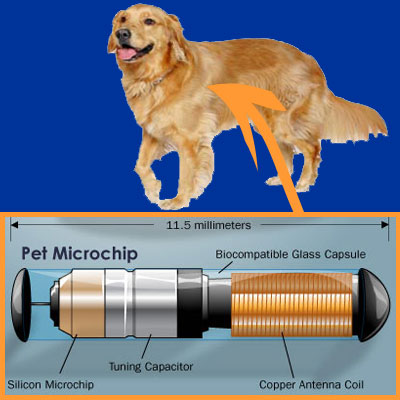
A microchip is a small electronic device that is about the size of a grain of rice. It contains a unique identification number that can be scanned by a special device. Implanting a microchip in dogs is a simple and quick procedure that is similar to administering a vaccination.
The veterinarian will use a syringe to inject the microchip just beneath the dog's skin, usually between the shoulder blades. The process is relatively painless and does not require anesthesia. The microchip remains in place for the dog's entire life, providing a permanent means of identification.
Once implanted, the microchip can be easily scanned by animal shelters, veterinary clinics, or other facilities equipped with microchip readers. This allows lost or stray dogs to be quickly identified and reunited with their owners, providing peace of mind for dog owners everywhere.
Different types of microchips available

Different types of microchips are available for dogs, each with its own unique features. The two main types of microchips used for dogs are the RFID (Radio Frequency Identification) chip and the GPS (Global Positioning System) chip.
RFID chips are the most common type and work by emitting a unique identification number when scanned by a microchip reader. This ID number is linked to the owner's contact information in a database, allowing them to be easily contacted if their dog is found.
On the other hand, GPS chips utilize satellite technology to track the exact location of a dog in real-time. This can be particularly useful for owners who have escape-prone dogs or for tracking working or sporting dogs during outdoor activities.
It's important to note that while GPS chips offer live tracking capabilities, they require a battery power source, which means they need to be recharged periodically. In contrast, RFID chips do not require any power source and remain active throughout the dog's lifetime.
When considering which type of microchip to use for your dog, it's essential to weigh factors such as your dog's lifestyle, specific needs, and your personal preferences. Consulting with your veterinarian can help you make an informed decision on which type of microchip would be best suited for your furry friend.
Microchipping Process
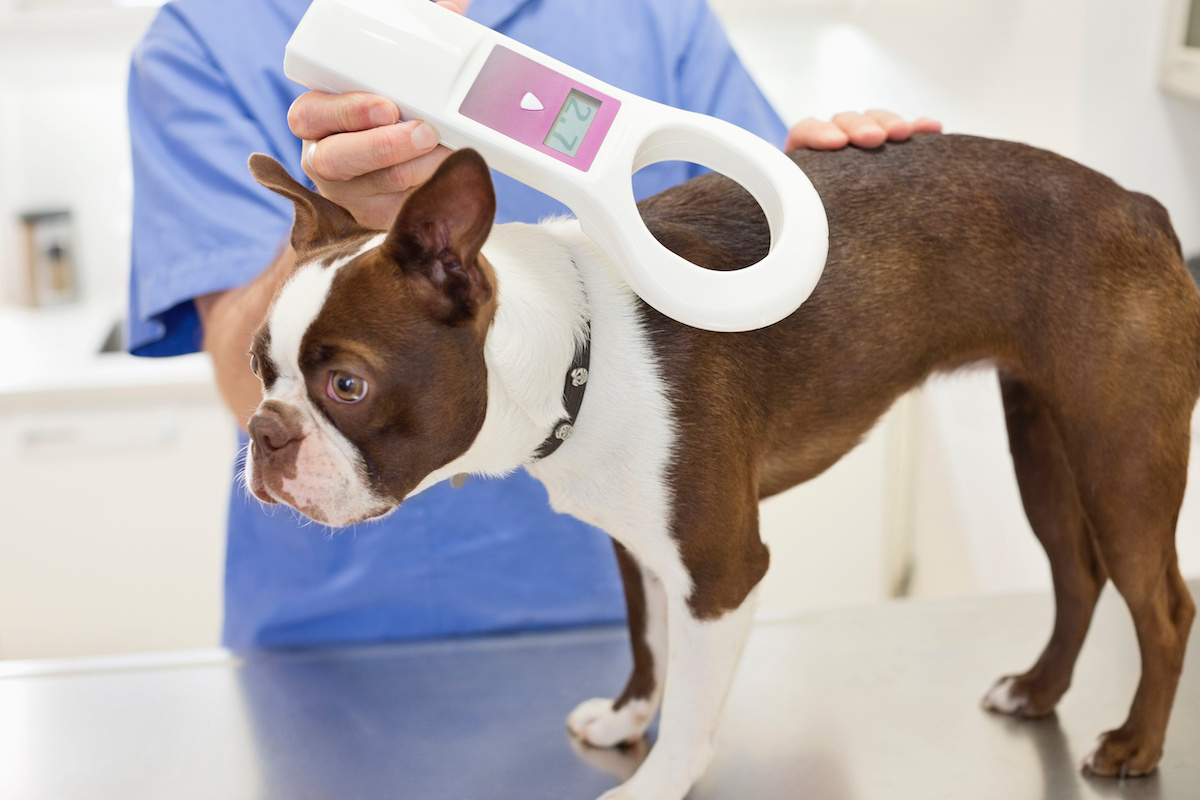
Preparing your dog for microchipping involves ensuring they are comfortable and relaxed. It is recommended to take your dog for a walk before the procedure to help release any excess energy. During the microchipping process, your dog will be restrained gently to prevent movement. The area where the microchip will be implanted, typically between their shoulder blades, is cleaned thoroughly. The microchip is then placed just under the skin using a sterile needle, which usually causes minimal discomfort or pain. It is important to note that potential risks associated with microchipping are rare but can include infection or movement of the chip. Always consult with a professional veterinarian to ensure a safe and successful microchipping procedure for your furry friend.
Preparing your dog for microchipping

Preparing your dog for microchipping is an important step to ensure a successful and stress-free procedure. Here are some guidelines to follow:
- Schedule an appointment: Contact your veterinarian or a licensed microchipping professional to schedule a convenient time for the procedure.
- Keep your dog calm: Before the appointment, make sure your dog is relaxed and comfortable. Avoid feeding them a large meal as it may cause discomfort during the procedure.
- Update vaccinations: Ensure that your dog's vaccinations are up-to-date before getting them microchipped. This will help prevent any potential complications.
- Bring necessary documents: When going for the microchipping appointment, bring along your dog's identification documents, such as their adoption papers or proof of ownership.
- Follow any specific instructions: Your veterinarian may provide additional instructions based on your dog's specific needs or medical conditions. Make sure to follow them accordingly.
By taking these steps, you can help make the process of microchipping as smooth and safe as possible for your beloved furry friend.
The procedure and potential risks involved
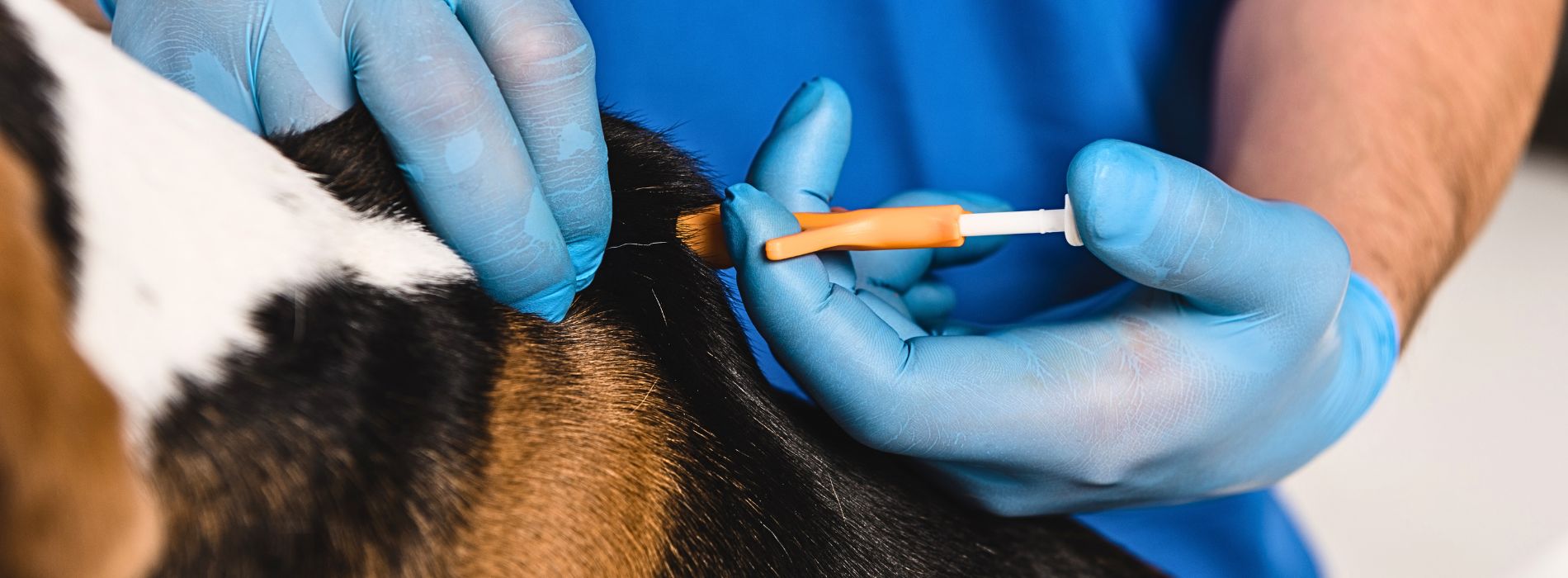
The procedure of microchipping your dog is a quick and relatively simple process. First, the area where the microchip will be inserted, usually the scruff of the neck, is cleaned and disinfected. Next, a veterinarian or trained professional will use a sterile needle to inject the microchip beneath the dog's skin. The entire procedure usually takes just a few seconds and does not require anesthesia.
While microchipping generally poses minimal risks, it is essential to be aware of potential complications. In rare cases, dogs may experience swelling, infection, or discomfort at the injection site. It is crucial to monitor your dog after the procedure and contact your veterinarian if you notice any unusual symptoms or reactions.
Overall, the benefits of microchipping far outweigh the potential risks involved.
Registering and Updating Information
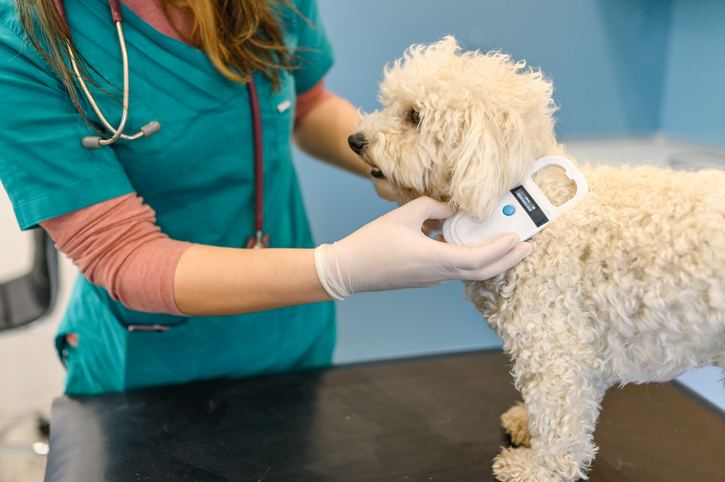
To ensure the effectiveness of microchipping, it is crucial to register your dog's microchip and keep your contact information up to date. Registering your dog's microchip involves providing important details such as your name, address, phone number, and email to a national microchip registry. This information allows shelters, veterinary clinics, and animal control agencies to access your contact details if your dog is found.
It is essential to update your information whenever there are any changes in your contact details to ensure that you can be reached promptly if your dog is found. Most microchip registries offer online platforms where you can easily update your information. By keeping accurate and current information on file, you increase the chances of being reunited with your beloved pet should they ever go missing.
Why it is crucial to register your dog's microchip

Registering your dog's microchip is crucial for ensuring their safety and increasing the chances of being reunited if they ever become lost or stolen. When you register your dog's microchip, you provide vital information such as your contact details and the dog's description, which is stored in a database accessible to animal shelters, veterinarians, and other authorized parties. If your dog gets lost, these professionals can scan the microchip and use the information to contact you promptly. Without proper registration, the microchip becomes virtually useless as it leaves no way of connecting the chip to its owner. By taking the time to register your dog's microchip, you can significantly improve the likelihood of a reunion in case of separation.
How to update your contact information

To update your contact information associated with your dog's microchip, you must follow a few simple steps. First, contact the microchip company or database where your dog's chip is registered. Provide them with the updated information, including your current address, phone number, and email address. They will typically have an online portal or customer service line that you can use to make these updates.
Remember to keep your contact details current and accurate at all times. In the event that your dog goes missing, having up-to-date information increases the chances of a successful reunion. It's essential to update your contact information promptly after any changes to ensure the microchip remains an effective tool in reuniting you with your beloved furry friend.
Importance of ID Tags and Collars
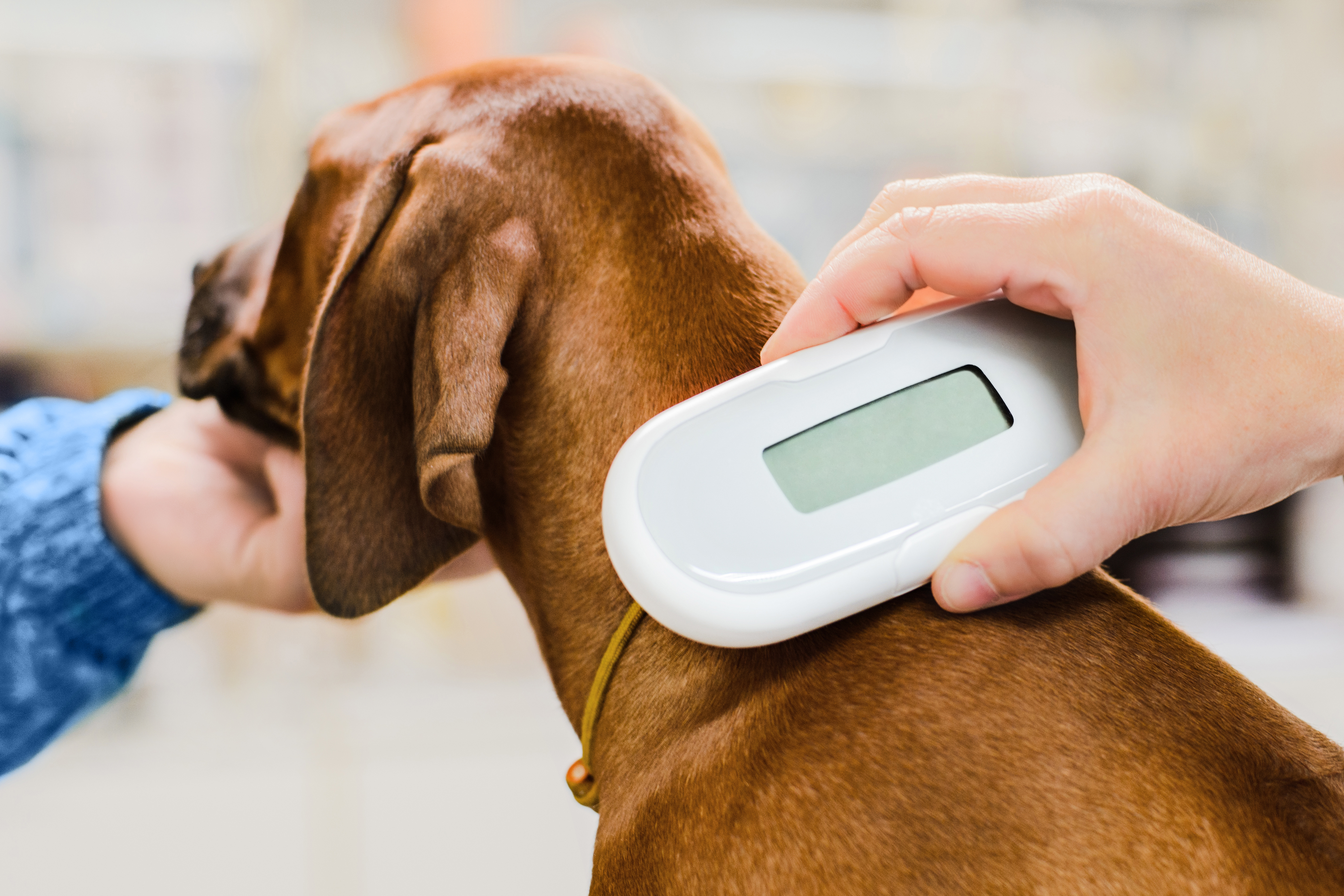
ID tags and collars play a crucial role alongside microchips in ensuring the safety of your dog. While microchips are a permanent form of identification, ID tags and collars provide an immediate way for people to contact you if your dog happens to stray away.
ID tags typically contain important information such as your name, phone number, and address. This enables anyone who finds your dog to easily reach out to you and arrange for a reunion. Collars with ID tags also act as a visual indication that your dog has an owner and is not a stray.
By combining the use of microchips with ID tags and collars, you create multiple layers of identification that significantly increase the chances of your lost dog being returned home safely. It's important to regularly check and update the information on these tags to ensure accuracy in case any changes occur.
The role of ID tags and collars alongside microchips

ID tags and collars play a crucial role alongside microchips in ensuring the safety and identification of your dog. While microchips provide a permanent form of identification, ID tags and collars provide immediate visual identification.
ID tags typically include your dog's name, your contact information, and any pertinent medical information. In case your dog gets lost or slips out of its collar, anyone who finds them can easily contact you and return them safely.
Collars also serve as a visible indicator that your dog has identification in place. They can be customized with stylish patterns or reflective material for visibility during nighttime walks.
By combining microchips with ID tags and collars, you create multiple layers of identification, increasing the chances of your lost dog being reunited with you promptly. Remember to regularly update the information on both the microchip registry and the ID tag to ensure accuracy.
Ensuring multiple layers of identification for your dog's safety

To ensure the safety of your beloved canine companion, it's crucial to have multiple layers of identification in place. While microchipping is a powerful tool, it should not be the only form of identification for your dog. Additionally, it's important to use ID tags and collars as an extra layer of protection.
ID tags provide a quick and easy way for someone who finds your lost dog to contact you. Include important contact information such as your phone number and address on the tag. Collars also serve as a visible indicator that your dog has an owner. Make sure to choose a collar that fits properly and is comfortable for your furry friend.
By combining microchips, ID tags, and collars, you create a comprehensive system that increases the chances of locating your dog if they ever get lost. Remember to regularly check that all forms of identification are up-to-date with accurate information. Ensuring multiple layers of identification will give you peace of mind knowing that you've taken every possible precaution to keep your dog safe.
Reuniting Lost Dogs with Their Owners

Microchipping your dog is a crucial step in ensuring their safety, especially when it comes to reuniting lost dogs with their owners. When a lost dog is found, animal shelters and veterinary clinics scan them for a microchip. If a microchip is present, the unique identification number can be used to access the owner's contact information through a database.
By having your dog microchipped and keeping your contact information up to date, you increase the chances of being reunited with your furry friend if they ever go missing. It's important to act quickly if your dog is lost, contacting local shelters, posting on social media groups, and distributing flyers in the neighborhood. By combining microchipping with these proactive steps, you can maximize the chances of finding your beloved pet and bringing them back home safely.
How microchips help in reuniting lost dogs with their owners
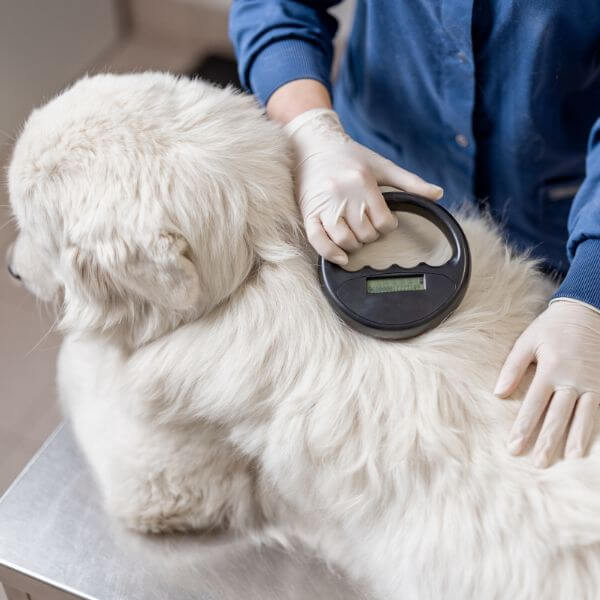
Microchips play a crucial role in reuniting lost dogs with their owners. When a lost dog is found, animal shelters or veterinary clinics can scan the dog for a microchip. The microchip contains a unique identification number that can be linked to the owner's contact information in a database. By registering the microchip and keeping the contact details updated, it becomes easier for shelters or veterinarians to contact the owner and facilitate the reunion.
Additionally, microchips provide undeniable proof of ownership. If someone claims your lost dog as theirs, scanning the microchip can quickly confirm your ownership by matching the identification number on the chip with your registered information. This ensures that your beloved pet is safely returned to you and not given to someone else mistakenly or fraudulently claiming ownership.
In summary, microchips greatly increase the chances of reuniting lost dogs with their owners by providing a reliable and permanent form of identification.
Steps to take if your dog goes missing

If your beloved canine companion goes missing, it can be an incredibly distressing experience. However, having your dog microchipped can significantly increase the chances of reuniting with them. Here are the steps to take if your dog goes missing.
- Act quickly: Time is of the essence when searching for a lost dog. Begin your search immediately and cover a wide radius around the area where they were last seen.
- Notify local authorities: Contact your local animal control, shelters, and veterinary clinics to inform them about your lost pet. Provide them with a detailed description and any identifying features.
- Spread the word: Create flyers with a clear photo and contact information. Distribute them in the neighborhood, post them in local businesses, and share them on social media platforms.
- Utilize online resources: Utilize websites and social media groups dedicated to reuniting lost pets with their owners, such as lostdogsofamerica.org or Lost Dogs of America's Facebook page.
- Keep searching: Don't give up! Continue searching and spreading the word until your furry friend returns home safely.
Remember, having your dog microchipped provides an additional layer of protection and greatly increases the likelihood of being reunited if they become lost or stray from home. Act promptly and utilize all available resources to bring your furry friend back home where they belong.
Microchipping Laws and Regulations

Understanding microchipping laws and regulations is crucial for dog owners. Many countries and regions have specific requirements regarding microchipping dogs. These laws are in place to promote responsible pet ownership and ensure the safety of dogs.
Before getting your dog microchipped, it is important to familiarize yourself with the laws and regulations in your area. Some regions may require all dogs to be microchipped, while others may only mandate it for certain breeds or purposes. Failure to comply with these laws can result in penalties or legal consequences.
By abiding by microchipping laws, you can provide proof of ownership in case of disputes, contribute to tracking lost or stolen dogs, and help authorities identify neglected or abused animals. It is essential to stay informed about the specific microchipping requirements in your region to ensure you are meeting your legal obligations as a responsible dog owner.
Understanding microchipping requirements in your region
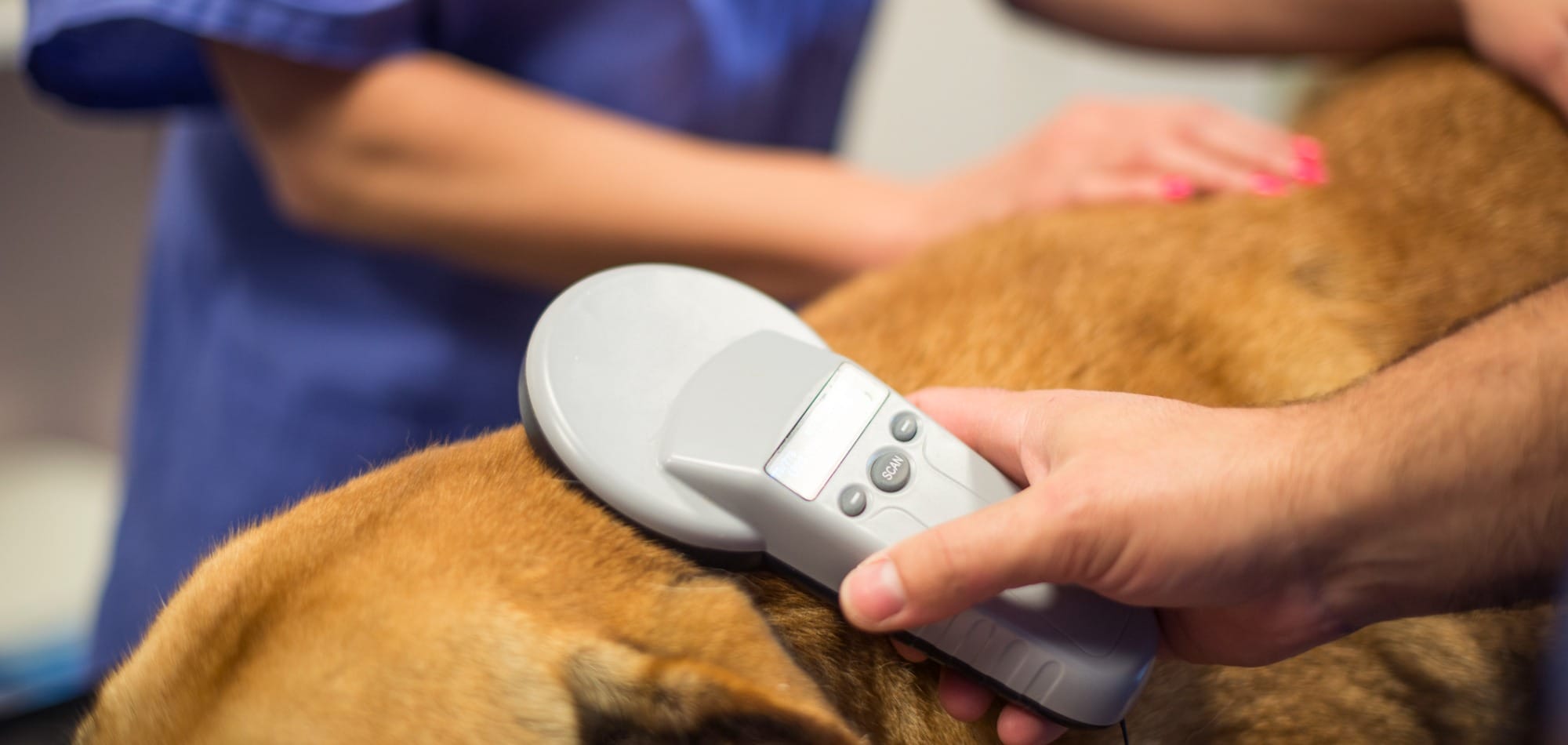
Understanding microchipping requirements in your region is essential to ensure that you are complying with local laws and regulations. Different regions may have specific requirements when it comes to microchipping dogs. It is important to research and understand these requirements to avoid any legal consequences.
Start by checking with your local animal control department or veterinary clinic for information on the specific regulations in your area. They can provide you with details about the type of microchip that is accepted, the required information to be registered, and any deadlines or penalties for non-compliance.
By staying informed about the microchipping requirements in your region, you can ensure that your dog is properly identified and increase the chances of them being reunited with you if they ever go missing. Remember, microchipping is not just beneficial for your dog's safety, but also a legal responsibility in many places.
The legal implications of not microchipping your dog

The legal implications of not microchipping your dog can vary depending on where you live. In many countries and states, there are laws in place that require dogs to be microchipped. Failure to comply with these laws may result in fines or other penalties.
Additionally, if your dog becomes lost or is involved in a legal dispute, the absence of a microchip could make it more difficult to prove ownership. Without a microchip, it can be challenging to establish a clear chain of custody and demonstrate that the dog is indeed yours.
Furthermore, some insurance policies and housing regulations may require proof of microchipping as a condition for coverage or pet-friendly accommodations.
To avoid potential legal consequences and ensure the well-being of your furry friend, it's essential to comply with the relevant microchipping laws and regulations in your jurisdiction.
Common Myths and Misconceptions

Dispelling common myths and misconceptions about microchipping is crucial in order to provide accurate information to pet owners. One common myth is that microchips are a tracking device, allowing owners to locate their dog in real-time. However, microchips do not have GPS capabilities and cannot be used for live tracking. Another misconception is that microchipping is painful for dogs. In reality, the procedure is quick and relatively painless, similar to a vaccination. Some people also believe that microchips can cause health issues or tumors in dogs, but numerous studies have shown that microchips are safe and do not pose any significant risks. It's important to address these concerns and provide accurate information about microchipping to ensure dog owners make informed decisions for their pets' safety.
Dispelling common myths and misconceptions about microchipping

Microchipping your dog is a simple and effective way to increase their chances of being reunited with you if they ever get lost. However, there are several myths and misconceptions surrounding microchipping that may deter some pet owners from considering this option. It's important to dispel these myths and provide accurate information.
One common misconception is that microchipping is painful for dogs. In reality, the procedure is similar to a routine vaccination and doesn't cause significant discomfort. Another myth is that microchips can track a dog's location in real-time. Microchips do not have GPS capabilities, but they do contain a unique identification number that can be scanned by a veterinarian or animal shelter.
It's also important to address concerns about the safety of microchips. Rest assured, microchipping has been safely used in millions of pets worldwide without any adverse effects. The chips are made of biocompatible materials that are well-tolerated by dogs.
By dispelling these common myths and misconceptions, pet owners can make an informed decision about microchipping their dogs and ensure their beloved companions have the best chance of being reunited if they ever go missing.
Addressing concerns and providing accurate information
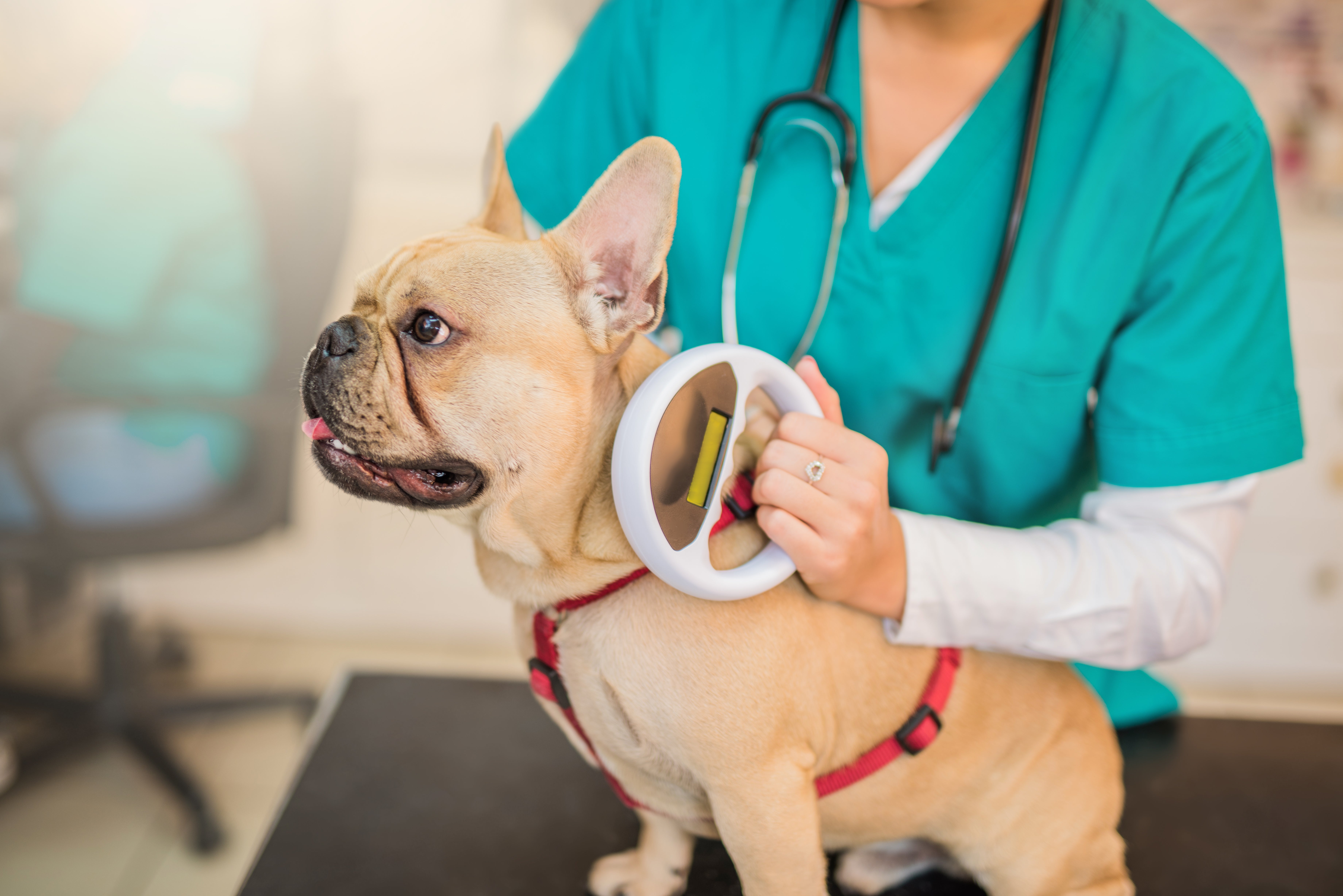
Addressing concerns and providing accurate information:
When it comes to microchipping your dog, there may be some concerns or misconceptions that need to be addressed. One common concern is whether the procedure is painful for the dog. Rest assured, microchipping is a quick and relatively painless process. The microchip is inserted under the skin using a needle, similar to a routine vaccination.
Another misconception is that microchips can track your dog's location. In fact, microchips only contain a unique identification number that can be scanned by a veterinarian or animal shelter. This number allows them to access your contact information, but it does not have any tracking capabilities.
Accuracy is crucial when registering your dog's microchip. Make sure to provide up-to-date contact information and keep it updated whenever there are changes. This will ensure that if your dog ever goes missing, you can be easily contacted.
It's important to know the laws and regulations regarding microchipping in your region. Some areas may require mandatory microchipping, while others may have specific rules about registration and updating information.
By addressing concerns and providing accurate information about microchipping, you can make an informed decision about this important step in ensuring your dog's safety and increasing the chances of being reunited if they ever go missing.
Conclusion
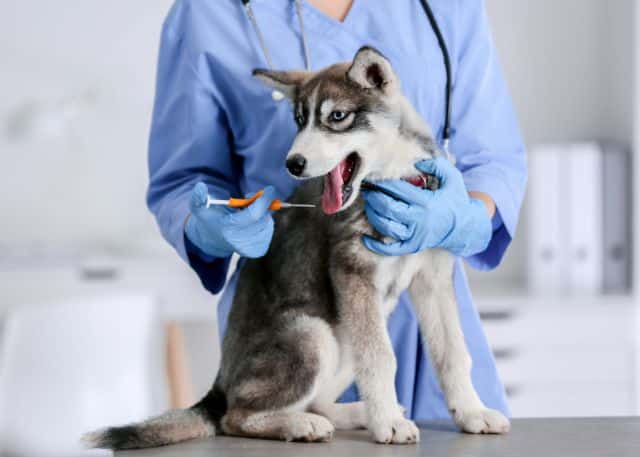
The power of microchipping your dog cannot be overstated. With its ability to provide permanent identification and increase the chances of reuniting lost dogs with their owners, microchipping is a crucial step in ensuring your pet's safety. By understanding the microchip, its implantation process, and how to register and update information, you can maximize the benefits of this technology. Coupled with ID tags and collars, microchips provide multiple layers of identification for your dog. It is also important to be aware of microchipping laws and regulations in your region to avoid any legal implications. By dispelling common myths and misconceptions, you can make informed decisions about microchipping your dog. Taking proactive steps like microchipping will give you peace of mind knowing that you've done everything possible to keep your furry friend safe.
The benefits and importance of microchipping your dog
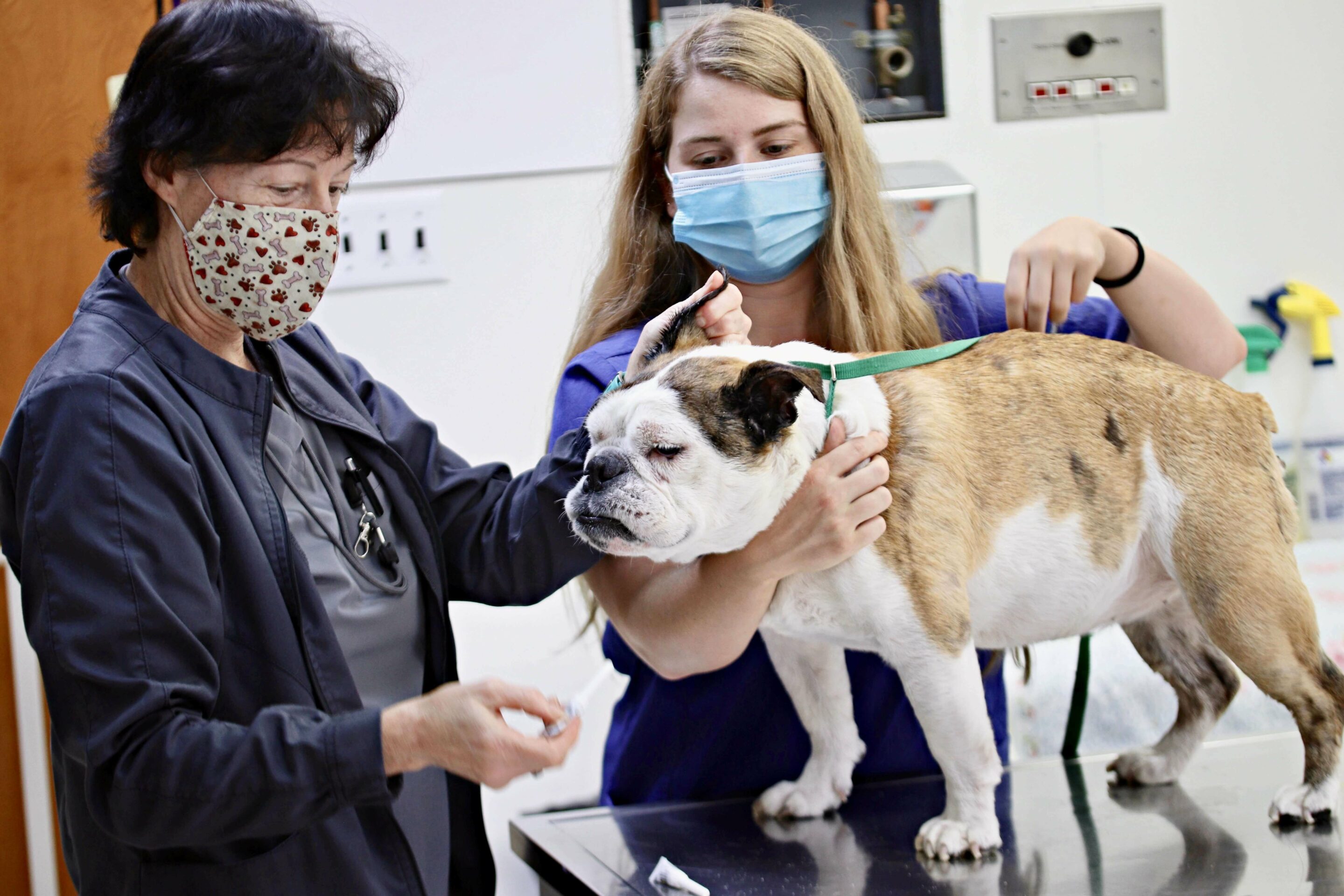
Microchipping your dog is not just a simple precaution - it is an absolute necessity. The benefits and importance of microchipping cannot be overstated. By having your dog microchipped, you significantly increase the chances of being reunited if they ever go missing. This tiny implant contains vital information about your furry friend, such as your contact details, making it easier for shelters and veterinarians to contact you.
But the advantages go beyond just finding a lost pet. Microchips also serve as proof of ownership, which can be crucial in legal disputes or cases of theft. Additionally, microchipping helps to deter animal cruelty by providing a means to identify abused or neglected animals.
Overall, microchipping offers peace of mind, ensuring that your beloved canine companion can be identified and returned to you quickly and safely in case of any unfortunate circumstances.
Taking proactive steps to ensure your dog's safety.

To ensure your dog's safety, it is important to take proactive steps beyond just microchipping. Here are a few additional measures you can implement:
- Secure Fencing: Install a sturdy fence around your yard to prevent your dog from wandering off or getting lost.
- Leash and Supervision: When outside, always keep your dog on a leash and supervise their activities to avoid any unforeseen accidents or incidents.
- Training and Recall Commands: Train your dog to respond to recall commands such as "come" or "stay" to keep them under control in potentially dangerous situations.
- Identification Tags: Alongside microchipping, make sure your dog wears identification tags with up-to-date contact information. These can help someone who finds your lost dog quickly contact you.
- Regular Check-ups: Regular veterinary check-ups can help identify any health issues early on and ensure your dog remains healthy and safe.
By implementing these proactive measures alongside microchipping, you can greatly increase the chances of keeping your beloved furry friend safe and secure.




0 Comments